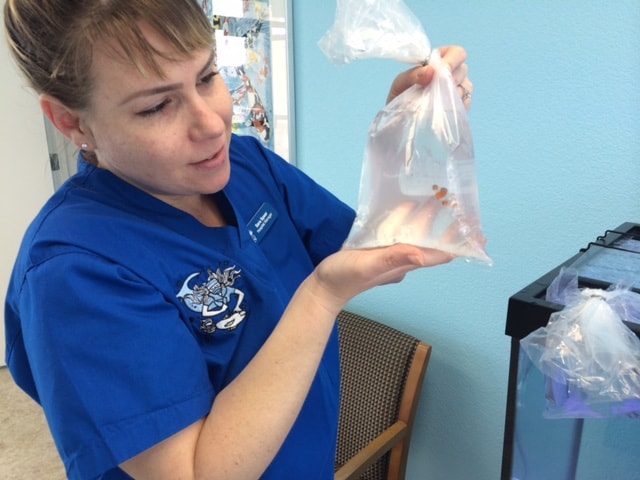Before we get started with the how, ask yourself the question “do I REALLY need to add a new fish?” You may be going for a particular aesthetic or just have the sudden desire to add new fish, but take a minute to ask if a new fish is in the best interest of your current fish population.
We understand the burning desire to add more and more until your system just can’t take any more, and you never want to hit the point where your system is overloaded. Overloaded tanks and ponds lead to poor water quality, stress and disease, all things we would prefer to avoid. And not all fish will have the same space requirements! Just because your filter can take another fish doesn’t mean your current occupants will be okay with a new roommate.
Is it the right time of year to add a new fish to your system? Especially for outdoor ponds, when you add fish to your system has to be timed in order to ensure your fish are set up for success.
If you can answer this question honestly, you can move on to the next step: “Do you have enough room for a new fish to have their own space with adequate filtration?”
Step 1: Set Up Your Quarantine Tank
You didn’t think it would be that easy, did you? Before adding any new fish to a pre-existing system, they have to stay in quarantine for 4-6 weeks. No, I don’t make the rules, but I do enforce them. Proper quarantine is essential to keeping your fish happy and healthy. No matter what your vendor swears they do and the fish is actually “disease free,” all fish will need to be isolated in their own separate system for at least 4-6 weeks. Learn more about our quarantine procedure and how to set up a correct quarantine tank or pond.
Step 2: Add New Fish to Quarantine Tank
How you add your fish to their quarantine tank will be very similar to how you add them to their final tank or pond. When it comes to acclimating fish, it is key to balance temperature and pH. This is accomplished by placing your bagged fish on the surface of your quarantine system and opening the bag, but do not allow any water to escape! Roll the edges of the bag so it floats on the surface of your quarantine tank. Then, add 2 tablespoons of tank water for small fish, 1/4 cup of tank water for large fish and small koi or 1/2 cup of tank water for large fish, to the bag with your new fish.
Repeat this every 5 minutes until the water volume has doubled. Net your fish out of the bag, or use a clean hand, and gently place them in their new tank. Remove the bag of old water mixed with new water and give it to your favorite plant.
You can also acclimate your fish using a drip line. Place your bagged fish in a bucket below the water line of your quarantine tank. Use airline tubing to create a gravity fed siphon allowing tank water to slowly fill up the bucket. Once the water level has doubled, net your new fish out of the bucket and add them to their quarantine tank.
Step 3: WATCH YOUR FISH
Never ever add a fish and walk away. The first 10-20 minutes after adding a new fish is critical to keep a close eye on them. It can be extremely stressful for a fish to enter a new environment, so watch them closely so they do not injure themselves or try to jump. You may need to add in a few additional décor items or caves to ensure your fish is comfortable in their new, temporary home. And don’t stare at your fish with your nose pressed up against the tank! This may frighten your fish even more.
Step 4: Complete Quarantine Protocol
Watch your fish’s behavior and appearance while they are in quarantine. Here is a video depicting the common physical and behavioral signs of disease that fish may exhibit when they are ill. If you suspect your fish may be sick, contact your local fish veterinarian for assistance. After the quarantine period is complete, you can now move your fish to their final home.
Step 5: Add New Fish to Main Tank or Pond
As per above, it is critical to match your fish’s temperature and pH before moving them to their new home. If your pH is within 0.5 and temperature within 5 degrees F, it is good to move. If not, here is how you can correct issues with water quality. You can gently net your fish or transport them in a clean, fish-safe bag.
After introducing new fish, once again, watch them closely! Not all fish will read the rule book about how they should act. When you add new fish, you may upset the hierarchy of your tank, which may take a few days or weeks to settle. Sometimes, your fish just may not get along at all, even with adding more places to hide. If that happens, you may be looking at a new tank altogether.

